#province of Leyte
Explore tagged Tumblr posts
Text
PROVINCE OF LEYTE
Leyte became the center of two important milestones in world history, which lend lasting color and significance to the history of the Philippines. In 1521 the province, was first visited by Spanish explorers led by Ferdinand Magellan who discovered a new route around the world.
Leyte, known as Tandaya to early Filipinos, was renamed Filipina by Roy Lopez de Villalobos in 1543, a name that later extended to the entire archipelago. Four centuries later, in 1944, the Battle of Leyte Gulf, the biggest naval battle between the Americans and the Japanese in world history, transpired in Leyte. General Douglas MacArthur, at the head of an army of more than 250,000 men waded ashore on the island at Red Beach, Palo, Leyte. This began the end of the Japanese Imperial Army, eventually, the second World War. Leyte is the largest of the six provinces of Eastern Visayas.
It has an excellent tract in agricultural crop production which include coconut, palay, abaca, sugarcane and corn, as well as production of aqua-marine products. The province has abundant geothermal power reserves. The Leyte Geothermal Power Field in Tongonan, Ormoc City is the second geothermal power producer in the world. It also houses two of the country’s top dollar earners: the Philippine Phosphate Fertilizer Corporation (PHILPHOS) and the Philippine Associated Smelting and Refinery Corporation (PASAR). Leyte is a place that never fails to calm, surprise, or captivate. It is embraced with scenic natural attractions and beautiful historical sites. These include Kalanggaman Island, Lake Danao National Park, San Juanico Bridge, McArthur Memorial National Park, Sto Niño Shrine and Heritage Museum, and the Provincial Capitol of Leyte.
(Credits to the rightful owner)

1 note
·
View note
Text


Every day praising an indigenous character Day 43-
Sucy Manbavaran from Little Witch Academia
Sucy Manbavaran (スーシィ・マンババラン Sūshī Manbabaran?) is one of the main protagonists of Little Witch Academia. She is a young witch from Southeast Asia.
Her first name, "Sucy", can mean "holy" in Malay and Indonesian, and may also be derived from "Susi" in Filipino, which means "key"; while her surname, "Manbavaran", is apparently derived from "Mambabarang" in Cebuano, which means "warlock/witch" and "black sorcerer/sorceress".
The Cebuano people are the indigenous people of the Philippines, Southeast Asia.
The Cebuano people (Cebuano: Mga Sugbuanon) are the largest subgroup of the larger ethnolinguistic group Visayans, who constitute the largest Filipino ethnolinguistic group in the country. They originated in the province of Cebu in the region of Central Visayas, but then later spread out to other places in the Philippines, such as Siquijor, Bohol, Negros Oriental, southwestern Leyte, western Samar, Masbate, and large parts of Mindanao.
Visayans or Bisayans are the indigenous people of the Visayan Islands. They speak many languages, of which the largest in terms of number of speakers today is Cebuano. According to Ethnologue there are 25 Bisayan language, although at least one (Tausug) is spoken by a group considered to be outside the Visayan culture area.
Visayans (Visayan: mga Bisaya; local pronunciation: [bisaˈjaʔ]) or Visayan people are a Philippine ethnolinguistic family group or metaethnicity native to the Visayas, the southernmost islands of Luzon and a significant portion of Mindanao.




#Every day praising an indigenous character#sucy manbavaran#sucy little witch academia#little witch academia#lwa#Native#Indigenous#Cebuano#Filipino
18 notes
·
View notes
Text

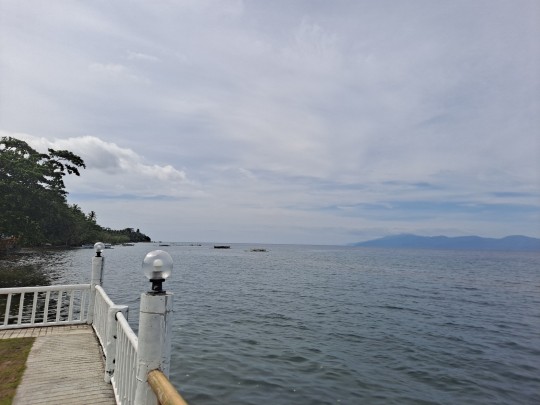
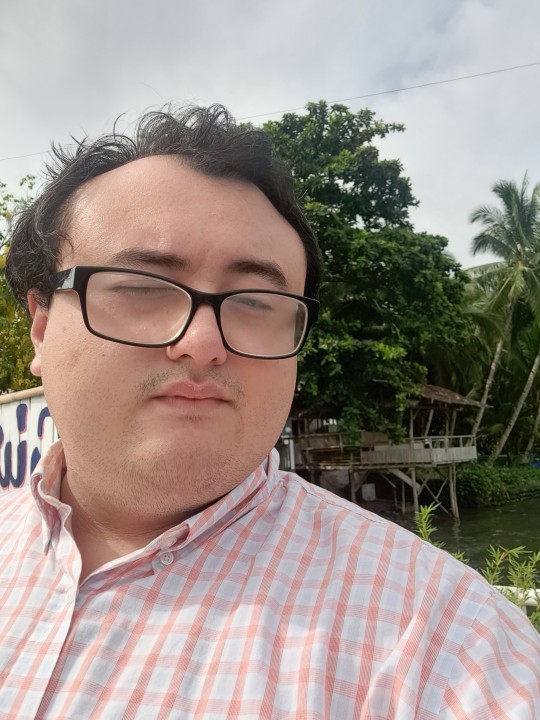
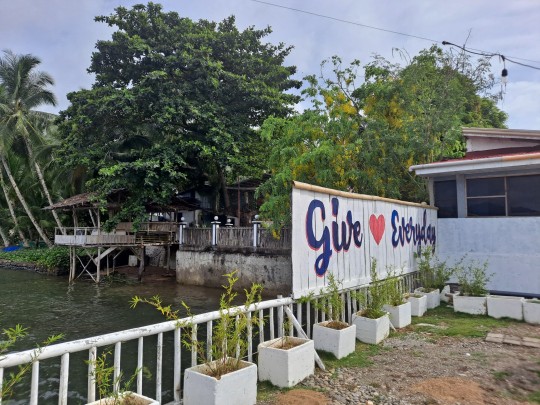
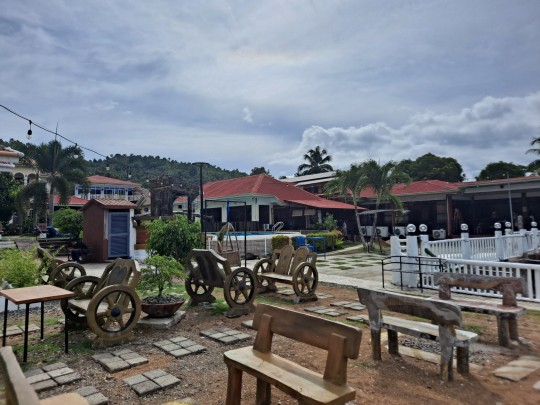
Kissbone cove resort
Magbagacay, Saint Bernard, Southern Leyte Province 6616 Philippines
Pretty tiny roadside. About as modern as the rest of the Spanish colonials here. Which is a bit better than the usual shacks at least. But it's showers are the same as my grandparents house and it's bucket and pail time.
Been a miserably sweaty time here.
6 notes
·
View notes
Text
Exploring the Wonders of Region VIII: Eastern Visayas’ Tourist Spots, Cuisine, and Culture

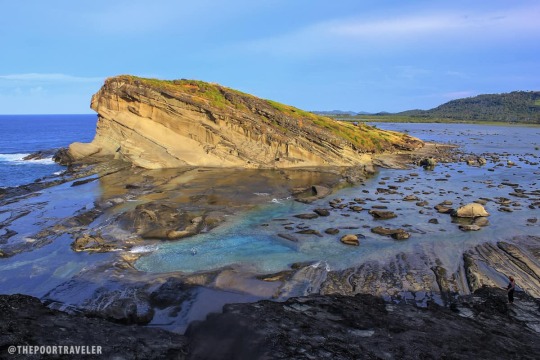
Region VIII, also known as Eastern Visayas, is a treasure trove of natural beauty, rich culture, and delectable cuisine. Comprising the provinces of Leyte, Samar, Biliran, Southern Leyte, Eastern Samar, and Northern Samar, this region offers a mix of breathtaking landscapes, historical landmarks, and unique gastronomic delights.
Top Tourist Spots in Region VIII
San Juanico Bridge (Leyte and Samar)
Spanning 2.16 kilometers, this iconic bridge connects the islands of Leyte and Samar. Known as the longest bridge in the Philippines, it offers stunning views of the San Juanico Strait, especially at sunrise and sunset.
Kalanggaman Island (Palompon, Leyte)
A pristine paradise, Kalanggaman Island is famous for its powdery white sand and crystal-clear waters. The sandbar, stretching into the azure sea, is a favorite spot for photography and relaxation.
Sohoton Natural Bridge National Park (Basey, Samar)
This ecotourism gem features caves, natural rock formations, and a stunning natural bridge. Visitors can explore the enchanting Sohoton Caves and kayak along the emerald waters of the Golden River.
Lake Danao (Ormoc City, Leyte)
A guitar-shaped lake surrounded by lush forests, Lake Danao is perfect for boating, fishing, and picnicking. Its serene atmosphere makes it a must-visit for nature lovers.
Biri Rock Formations (Biri, Northern Samar)
These majestic rock formations sculpted by wind and waves are a geological marvel. Biri’s unique coastal scenery is a haven for adventurers and photographers.
Limasawa Island (Southern Leyte)
Known as the site of the First Easter Mass in the Philippines, Limasawa Island combines historical significance with scenic beaches and vibrant marine life.
Cuisine of Region VIII: A Taste of Eastern Visayas
Binagol (Leyte)
A sweet delicacy made from grated talyan (a type of root crop), coconut milk, sugar, and nuts, Binagol is steamed in coconut shells and wrapped in banana leaves, making it both delicious and eco-friendly.
Morcón (Samar)
This local sausage is made with minced meat, spices, and vinegar, then encased in pork intestines. It’s often enjoyed as a savory treat during special occasions.
Law-Uy (Leyte)
A comforting vegetable soup made with native ingredients like malunggay, squash, and okra, Law-uy is a nutritious dish that reflects the simplicity and healthiness of the region’s cuisine.
Tinumok (Southern Leyte)
Similar to the famous laing of Bicol, this dish uses gabi leaves stuffed with ground meat and cooked in coconut milk. It’s a creamy, savory delight.
Suman Latik (Leyte and Samar)
A sticky rice delicacy served with caramelized coconut syrup, Suman Latik is a favorite dessert that pairs well with native hot chocolate or coffee.
Cultural Experiences and Festivals
Pintados-Kasadyaan Festival (Tacloban City, Leyte)
Celebrated every June, this festival features vibrant street dances inspired by the body tattoos of the region’s ancient warriors. It’s a showcase of Leyte’s rich history and artistic spirit.
Sangyaw Festival (Tacloban City, Leyte)
Held in honor of Sto. Niño, this festival highlights Tacloban’s devotion and cultural pride through colorful parades and religious events.
Karayapan Festival (Eastern Samar)
A celebration of nature and bounty, this festival in Guiuan features dances depicting the harmonious relationship between humans and the environment.
Subiran Regatta (Leyte)
A traditional boat-racing event using small native sailboats called subiran, this festival demonstrates the seafaring heritage of Eastern Visayas.
Why Visit Region VIII?
Eastern Visayas is a region of contrasts, offering pristine islands, rugged coastlines, and lush interiors. Its historical landmarks, such as MacArthur Landing Memorial Park in Palo, Leyte, add depth to its natural beauty, while its festivals and local crafts showcase the region’s vibrant culture.
Whether you’re an adventurer seeking new thrills, a foodie eager to try authentic Filipino dishes, or a history buff exploring the past, Region VIII promises a fulfilling journey. From the welcoming smiles of the Waray and Cebuano-speaking locals to the untouched splendor of its landscapes, Eastern Visayas is a destination worth exploring.
Pack your bags and discover the wonders of Region VIII—where nature, culture, and cuisine come together in perfect harmony.
0 notes
Text
Leyte: A Tapestry of Natural Beauty and Rich History
By WPS News Travel Corespondent Baybay City, Philippines | January 7, 2025 Leyte, an island province in the heart of the Philippines, is a destination that effortlessly weaves together the allure of pristine nature, the depth of history, and the warmth of its people. While it boasts a myriad of attractions, it’s the harmonious blend of these elements that truly defines its…
0 notes
Text
SALIENT POINTS ON 2019 REVISED RULES OF CIVIL PROCEDURE AND THE 2019 REVISED RULES ON EVIDENCE
General Principles and Objectives
Rules of procedure are essential for connecting substantive law with judicial administration, ensuring court issuances and processes are valid, accurate, orderly, timely, and intelligible.
The Supreme Court of the Philippines aims to improve procedural laws to provide effective service to the public.
The 2019 Revised Rules of Civil Procedure and the 2019 Revised Rules on Evidence reflect knowledge acquired from various jurisdictions and stakeholders.
Court Structure and Jurisdiction
Judicial power is vested in the Supreme Court and lower courts established by law.
The Supreme Court's interpretations of the Constitution and laws are final.
Actions from Courts of First Instance in Luzon, Mindoro, Marinduque, and Paragua are heard in Manila; those from Romblon, Panay, Masbate, Negros, the Sulu Archipelago, and the south half of Mindanao are heard in Iloilo; and those from Cebu, Bohol, Samar, Leyte, and the north half of Mindanao are heard in Cebu.
Original actions in the Supreme Court are filed in Manila but may be heard in Iloilo or Cebu, if the court orders.
Regional Trial Courts have jurisdiction over actions involving title to or possession of real property, or any interest therein, where the assessed value exceeds 20,000 pesos (or 50,000 pesos in Metro Manila). They also have jurisdiction over cases where the demand exceeds 100,000 pesos, or 200,000 pesos in Metro Manila.
Justices of the peace and municipal court judges have exclusive jurisdiction over civil actions where the demand does not exceed 10,000 pesos.
The Supreme Court may designate branches of Metropolitan and Municipal Trial Courts to exclusively try certain cases, like forcible entry and unlawful detainer.
In the absence of all Regional Trial Judges in a province or city, a Metropolitan, Municipal, or Municipal Circuit Trial Judge may hear petitions for habeas corpus or bail applications.
Pleadings and Motions
A pleading should contain a caption, body, relief sought, and date.
The body of the pleading should be divided into numbered paragraphs.
A pleading must be signed by the party or counsel, with their address.
The signature of counsel certifies the pleading is supported by good ground and not for delay.
Pleadings must state the names of witnesses, a summary of their testimonies, and supporting evidence.
Material allegations in a pleading are deemed admitted if not specifically denied.
Affirmative defenses must be raised in the answer or they are waived.
The court must resolve affirmative defenses within a specified period.
A motion is an application for relief other than by a pleading.
Non-litigious motions are resolved by the court within five days of receipt, and do not require a hearing.
Litigious motions require an opposition within five days and are resolved within fifteen days of receipt of the opposition.
Motions for extension to file an answer, for postponement, and for the issuance of a writ of execution are considered non-litigious motions.
Motions for a bill of particulars, to dismiss, for a new trial, for reconsideration, for summary judgment, and for judgment on the pleadings are considered litigious motions.
Certain motions are prohibited, including motions to dismiss except on specific grounds.
Pre-Trial and Judgment
Pre-trial is mandatory and aims to simplify issues, obtain stipulations, and set trial dates.
A pre-trial brief must be filed, which includes a concise statement of the case, a summary of facts, issues, and lists of witnesses and evidence.
If there are no more controverted facts, the court may motu proprio submit the case for summary judgment or judgment on the pleadings.
Judgment on the pleadings is rendered when an answer fails to tender an issue or admits material allegations.
Summary judgment is rendered when there is no genuine issue of material fact.
Judgments must be rendered within 90 days of the termination of the pre-trial.
Discovery
Parties may take depositions, which can be used in court.
Objections to the admissibility of depositions may be made at trial.
A party does not make a person their witness by taking their deposition.
Written interrogatories may be used to gather information.
Requests for admission can be used to establish facts.
Refusal to comply with discovery orders may lead to various sanctions, including the establishment of facts, prohibition of evidence, striking of pleadings, or default judgment.
Provisional Remedies
Preliminary attachment allows for the seizure of property to satisfy a judgment.
Replevin allows for the recovery of personal property.
A writ of possession can be issued to enforce a judgment for the delivery of real property.
Special Civil Actions
Interpleader is used when conflicting claims exist over the same subject matter.
Certiorari is used to review acts or omissions of a court or quasi-judicial agency.
Quo warranto is used to determine the right to a public office or position.
Expropriation is the process of taking private property for public use.
Partition is used to divide real estate among co-owners.
Forcible entry and detainer actions are governed by summary procedure.
Appeals
Appeals to the Supreme Court are generally taken by a petition for review on certiorari, except in criminal cases with death, reclusion perpetua, or life imprisonment.
The Regional Trial Court loses jurisdiction over a case after the appeal is perfected.
The Court of Appeals may conduct a preliminary conference to simplify issues and explore settlement.
The appellate court can affirm, reverse, or modify the appealed judgment.
Other Points
Clerks and other court officials are granted leaves of absence by the judge.
Judges may be paid transportation and a portion of their salary during travel.
Fees, fines, and costs collected by justices of the peace must be paid into the municipal treasury.
Monies paid into court are received by the clerk of court and paid into the National Treasury, with 20% of fees set aside for compensation of attorneys de oficio.
Judges may receive longevity pay based on their years of service.
The court can order a party to pay the expenses incurred by the other party if the party refuses to admit a document's genuineness or the truth of a fact and is later proven to be true.
There are specific rules regarding the manner of offering exhibits and stipulations of facts.
An order denying a demurrer to evidence is not subject to appeal or special civil action before judgment.
0 notes
Text
TACLOBAN CITY; The province of Leyte pushes for science tourism.
In order to increase knowledge and appreciation of science, technology, and innovation through educational tourism in the province of Leyte, the Department of Science and Technology (DOST) and the Department of Tourism (DOT) are promoting a science tourism project.On November 29 and 30, representatives of Leyte’s travel and tour companies, officials from the two organizations, and the Eastern…
0 notes
Text
HEADS UP TOURIST!!
Aside from the delicious delicacies that the Province of Leyte offered, it has also a lot of beautiful places that is perfect for the summer.
Don't miss the opportunity to visit this places together with your family, friends, classmates, etc. This places is a perfect combination to eat together with the delicacies that the province has. WHAT ARE YOU WAITING FOR?
"The adventure is out there." - Charles Muntz

2 notes
·
View notes
Text
Events 10.24 (after 1920)
1926 – Harry Houdini's last performance takes place at the Garrick Theatre in Detroit. 1929 – "Black Thursday" on the New York Stock Exchange. 1930 – A bloodless coup d'état in Brazil ends the First Republic, replacing it with the Vargas Era. 1931 – The George Washington Bridge opens to public traffic over the Hudson River. 1944 – World War II: Japan's center force is temporarily repulsed in the Battle of Leyte Gulf. 1945 – The United Nations Charter comes into effect. 1946 – A camera on board the V-2 No. 13 rocket takes the first photograph of earth from outer space. 1947 – Famed animator Walt Disney testifies before the House Un-American Activities Committee, naming Disney employees he believes to be communists. 1947 – United Air Lines Flight 608 crashes in the Bryce Canyon National Park in Garfield County, Utah, while attempting an emergency landing at Bryce Canyon Airport, killing 52 people. 1949 – The cornerstone of the United Nations Headquarters is laid. 1950 – Annexation of Tibet by the People's Republic of China: The People’s Liberation Army ceases all military operations in Tibet, ending the Battle of Chamdo. 1954 – US President Dwight D. Eisenhower pledges United States support to South Vietnam. 1957 – The United States Air Force starts the X-20 Dyna-Soar crewed space program. 1960 – Nedelin catastrophe: An R-16 ballistic missile explodes on the launch pad at the Soviet Union's Baikonur Cosmodrome space facility, killing over 100 people, including Field Marshal Mitrofan Nedelin. 1963 – An oxygen leak from an R-9 Desna missile at the Baikonur Cosmodrome triggers a fire that kills seven people. 1964 – Northern Rhodesia gains independence from the United Kingdom and becomes Zambia. 1975 – In Iceland, 90% of women take part in a national strike, refusing to work in protest of gender inequality. 1980 – The government of Poland legalizes the Solidarity trade union. 1986 – Nezar Hindawi is sentenced to 45 years in prison, the longest sentence handed down by a British court, for the attempted bombing of an El Al flight at Heathrow Airport. 1990 – Italian prime minister Giulio Andreotti reveals to the Italian parliament the existence of Gladio, the Italian NATO force formed in 1956, intended to be activated in the event of a Warsaw Pact invasion. 1992 – The Toronto Blue Jays become the first Major League Baseball team based outside the United States to win the World Series. 1998 – Deep Space 1 is launched to explore the asteroid belt and test new spacecraft technologies. 2003 – Concorde makes its last commercial flight. 2004 – Arsenal Football Club loses to Manchester United, ending a row of unbeaten matches at 49 matches, which is the record in the Premier League. 2005 – Hurricane Wilma makes landfall in Florida, resulting in 35 direct and 26 indirect fatalities and causing $20.6B USD in damage. 2007 – Chang'e 1, the first satellite in the Chinese Lunar Exploration Program, is launched from Xichang Satellite Launch Center. 2008 – "Bloody Friday" saw many of the world's stock exchanges experience the worst declines in their history, with drops of around 10% in most indices. 2014 – The China National Space Administration launches an experimental lunar mission, Chang'e 5-T1, which will loop behind the Moon and return to Earth. 2015 – A driver crashes into the Oklahoma State Homecoming parade, killing four people and injuring 34. 2016 – A French surveillance aircraft flying to Libya crashes on takeoff in Malta, killing all five people on board. 2016 – Three heavily-armed terrorists from the Islamic State – Khorasan Province open fire on and eventually suicide bomb a police training centre in Balochistan, Pakistan, killing at least 59 cadets and injuring more than 165 others. 2018 – The world’s longest sea crossing, the Hong Kong–Zhuhai–Macau Bridge, opens for public traffic.
0 notes
Text
BALITANG REHIYONAL: An Illicit Skin Lightening Products from Pakistan found Mercury-contaminated cosmetics in Tacloban City, says Toxics and Environmental Watchdog Group

TACLOBAN, LEYTE -- Environmental watchdog group 'BAN Toxics' recently exposed the unlawful sale of three (3) variants of 'Goree' skin lightening products (SLPs) which previously banned by the Philippines' Food and Drug Administration (FDA) in the late mid-October 2017 due to health damaging mercury concentrations.
In an exclusive market surveillance conducted by the BT Patrollers, the said group discovered the localized over-the-counter (OTC) sale of Goree Beauty Cream with Lycopene Avocado & Aloe Vera, Goree Day & Night Beauty Cream Oil: Free Total Fairness, and Goree Gold 24K Beauty Cream, pricing at PHP300 to PHP350 (roughly between U$D5.15 to U$D6.00 or PKR1,425.76 to PKR1,663.39) in beauty and wellness shops along downtown area within this week by the end of May 2024 in Tacloban City, Leyte.
Using a chemical XRF (X-Ray Fluorescence) analyzer to determine mercury concentration, the group found that 'Goree Beauty Cream' with Lycopene Avocado & Aloe Vera had 21,700 parts per million (ppm) of mercury, 'Goree Day & Night Beauty Cream Oil: Free Total Fairness System' had 22,900 ppm; and 'Goree Gold 24K Beauty Cream' had 21,800 ppm. All of these unsuspected skin creams from a manufacturer source out of Pakistan have existing public health warnings against their use and sale due to toxic mercury content.
Cited at the end of October 2017 advisory as one former director general of Philippines' FDA named Ms. Nela Charade G. Puno: "Mercury salts in cosmetic products inhibit the formation of skin melanin which will result in lighter skin tone. Adverse health effects brought by high toxic mercury in cosmetics products include kidney damage, skin rashes, skin discoloration and scarring. Chronic use reduces the skin's normal resistance against bacterial and fungal infections. Other effects include anxiety, depression or psychosis and peripheral neuropathy", the advisory stated.
As you may really notice when you check and read the label first, if you are attempting to purchase an imported Pakistani-based skin lightening product of 'Goree', these cosmetic products won't show a list about "mercury" in the ingredients label after they finally come out from the factory and later imported globally.
Thony Dizon, whose a Toxics Campaigner of the group told local media reporters: "The proliferation of such prohibited beauty cosmetics in cities and provinces nationwide must end and should be addressed immediately by regulatory agencies. We call the attention of the FDA in Region 8 to conduct post-marketing surveillance and enforcement action to stop the sale and use of these banned toxic products", he added.
Around late-April 2024, 'BAN Toxics' launched a video documentary titled "The Dark Side of Skin-Lightening" - a 13-minute documentary film shedding light on the hidden dangers lurking within many SLPs due to their mercury content.
The watchdog group of 'BAN Toxics' continuously monitors and documents the illegal trade of banned and prohibited beauty products sold in the local market in the entire region of Leyte, and online (such as Shopee and Lazada) to warn the public about the dangers of toxic mercury exposure and to protect human health and the environment from mercury-added cosmetics.
The documentary reveals that many mercury-added SLPs continue to proliferate in the local market despite being banned by the FDA. It includes market monitoring conducted by the group in both online and physical stores, showing how easy it is to buy several illicit brands such as Goree, 88 Total White, Collagen Plus, Faiza and among others. This aims to raise public awareness, advocate for robust regulations & enforcement policies, and promote international collaboration as key measures to address the issue of mercury-added SLPs.
Because of the illegal cosmetic SLP imports including 'Goree' family of products to be unexpectedly go on sale in-store or online, the beauty faces of Filipinos who are allegedly using it are in for a nationwide public health concern that will save you money from your fashion disaster of life.
PHOTO COURTESY: BAN Toxics via PR BACKGROUND PROVIDED BY: Tegna
SOURCE: *https://www.facebook.com/100064702179348/posts/885140493652682 [Referenced PR Article via BAN Toxics] *https://www.kwentongofw.com/2018/06/everything-you-need-to-know-about-goree/ [Referenced Classic News Article via Kwentong OFW] *https://www.fda.gov.ph/wp-content/uploads/2022/05/FDA-Advisory-No.-2017-289.pdf [Referenced Advisory from FDA-PH] *https://journal.com.ph/warning-pakistan-made-goree-gold-beauty-cream-24k-contains-toxic-mercury/ [Referenced News Article from People's Journal] and *https://iprice.ph/goree/ [Referenced Price Listings via iPrice]
-- OneNETnews Online Publication Team
#regional news#tacloban#leyte#BAN Toxics#goree#goree beauty cream#pakistan#consumer watch#awareness#health concern#skin lightening products#not sponsored#fyp#OneNETnews
0 notes
Text





Russian U Tour from Visayas
Pintados 382
Company/Owner: V.S. Pintados Corporation/Bicol Isarog Transportation Systems, Inc.
Chassis Manufacturer: Higer Bus Co. Ltd.
Chassis Model: Higer KLQ6128LQ (LKLR1FS)
Engine Manufacturer: Guangxi Yuchai Machinery Co. Ltd.
Engine Model: Yuchai YC6L330-42
Coach Manufacturer: Higer Bus Co. Ltd.
Coach Model: Higer KLQ6128LQ "U-Tour" (A80)
Engine Location: Rear
Seating Configuration: 2x2
Seating Capacity: 49 passengers + 1 driver + 1 conductor
Type of Service: Public Utility Bus (PUB)
Type of Operation: Provincial Operation
Classification: Airconditioned Bus (AC)
Route: Pasay City/Cubao (Quezon City) - Tacloban City (Leyte Province)
Franchise Route: Metro South Intermodal Transport Terminal (Parañaque City) - Tacloban City (Leyte Province)
Transmission: M/T
Speed: 6 forward, 1 reverse
Suspension: Air Suspension
Shot Location: Flying V Turbina, Pan-Philippine Highway, Brgy. Turbina, Calamba City, Laguna
Date Taken: May 24, 2024
NOTE: Errors may be evident with this description. Corrections will be done once verified.
0 notes
Text
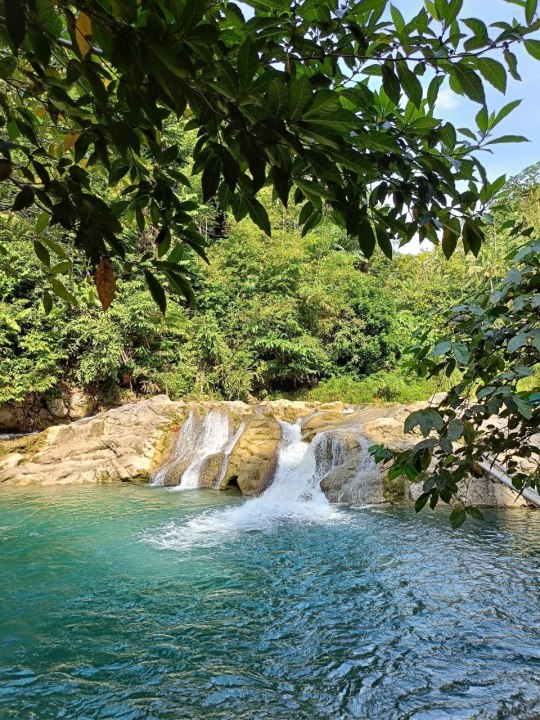
In my endless quest to uncover the lesser-known jewels of my own Province in the Philippines, I stumbled upon a pristine paradise in the heart of Southern Leyte that's not widely mentioned in the typical travel guides. Nestled within the tranquil barangay of Camansi in the municipality of Tomas Oppus, Mabawod Falls emerges as a sanctuary of natural beauty and serenity, largely kept under the radar. My adventure to this secluded wonder was nothing short of magical, offering a refreshing escape from the hustle and bustle of everyday life.
Journey to Mabawod Falls
Tomas Oppus, a charming 5th-class municipality with a warm population of 16,990 souls, serves as the gateway to this hidden gem. Despite its modest size, the area is rich in untouched natural landscapes, with Mabawod Falls being one of its crown jewels. The journey to the falls is an adventure in itself—a 45-minute ride from the town proper, accessible by any form of transportation and a 15-minute trek to the falls. As the scenery transitioned from urban to rural, the anticipation built up, promising an extraordinary encounter with nature.
The Enchantment of Mabawod Mini Falls
Upon arrival, I was greeted by the soothing sounds of cascading waters, set against a backdrop of lush greenery that seemed to blanket the area in a serene embrace. Mabawod Falls, although referred to as "mini," packs a majestic punch with its fresh, crystal-clear waters and undisturbed natural scenery. It's a place where time seems to stand still, inviting visitors to immerse themselves in the tranquility and beauty of the natural world.
A Favorite Among Locals
What makes Mabawod Falls truly special is its status as a beloved spot among the locals. It's a testament to the community's appreciation and respect for their natural surroundings. The falls provide a cool, refreshing respite from the tropical heat, making it a perfect spot for a leisurely dip or a picnic with friends and family. The unspoiled environment and the purity of the water reflect the community's commitment to preserving this natural wonder for generations to come.
A Call to Responsible Tourism
As travelers seeking to experience the beauty of hidden destinations like Mabawod Falls, it's crucial to adopt a mindset of responsible tourism. It means respecting the natural environment, minimizing our impact, and supporting local communities. By doing so, we can ensure that these hidden gems remain vibrant and accessible for future adventurers to discover and enjoy.
Final Thoughts
My visit to Mabawod Falls was a reminder of the Philippines' abundant natural beauty, much of which remains off the beaten path. It's a call to explore beyond the familiar and to discover the extraordinary wonders that lie waiting in the more secluded corners of the world. Mabawod Falls, with its serene waters and lush surroundings, is a destination that truly captures the heart of what it means to travel—it's an experience that enriches the soul and fosters a deep appreciation for the natural world.
To my fellow wanderlust-filled souls, I extend an invitation to embark on an unforgettable journey to Tomas Oppus in Southern Leyte. There, nestled within its lush landscapes, you'll find the enchanting Mabawod Falls—a treasure awaiting your discovery. This hidden gem promises to be a highlight in your collection of travel tales. For a mere 200 pesos, you can secure a cottage, while an environmental fee of 10 pesos helps preserve the beauty of this pristine location. Remember, the most unforgettable adventures are often tucked away in the least expected places, waiting to be unveiled by the curious and the bold. So, pack your bags, set your spirit free, and let Tomas Oppus reveal its wonders to you.
1 note
·
View note
Text
Iloilo City's ISIP: Transforming Education Opportunities

A Milestone for Iloilo City's ISIP
In an unprecedented move, Iloilo City takes center stage as the nationwide launch site for the Integrated Scholarships and Incentives Program (ISIP) for the Youth. This landmark initiative, a pivotal part of President Bongbong Marcos's Bagong Pilipinas Serbisyo Fair, kicked off with grandeur at the cultural center of West Visayas State University on a recent Saturday.
Empowering Dreams: Iloilo City Leads the Way
Rep. Julienne Baronda: Making History for Indigent Students Iloilo City Lone District Rep. Julienne Baronda expressed her pride, declaring, "We are making history." The choice of Iloilo City as the launch venue for the ISIP for the Youth is a testament to the city's commitment to shaping the future of indigent students.
Scholarship Program Details
Opening Doors to Education: The ISIP Advantage Under the ISIP, indigent students are welcomed into the folds of the Commission on Higher Education's "Tulong Dunong" scholarship program. This opens doors to a substantial PHP15,000 grant annually, a financial lifeline until they proudly walk the stage at graduation. Additional support includes a PHP2,000 semester grant from the Department of Social Welfare and Development’s Assistance in Individuals in Crisis Situations.
Support Beyond Students: A Ripple Effect
Extending a Helping Hand to Families The ISIP not only supports students but extends its reach to parents or guardians without employment. The Tulong Panghanapbuhay sa Ating Disadvantaged/Displaced Workers program of the Department of Labor and Employment ensures that the ripple effect of educational empowerment reaches beyond the classroom.
Nationwide Impact and Personal Testimonials
From Iloilo City to the Nation: ISIP's Ambitious Goals Baronda revealed that the ISIP aims to benefit 13,000 scholars nationwide. Denie Villaruz, a sophomore at the University of San Agustin, shared her gratitude, emphasizing the program's impact on her solo-parent household. Patricia Angela Gallon, a graduating Education student of WVSU, echoed the sentiment, highlighting the significant relief the program brings to their financial burdens.
Government's Caravan of Services: A Commitment to the People
Beyond Education: BPSF's Two-Day Extravaganza Before the ISIP launch, House Speaker Martin Romualdez joined the two-day BPSF at the Guimbal National High School gymnasium. Iloilo, as the ninth province in line, experienced the government's caravan of services, with 51 agencies delivering 160 programs worth PHP1 billion to approximately 90,000 beneficiaries.
Looking Ahead: A Nationwide Commitment
Romualdez's Vision: Extending BPSF to All 82 Provinces Romualdez expressed the government's commitment to extending the BPSF to all 82 provinces. Since its August launch in Biliran, the caravan has covered Ilocos Norte, Camarines Sur, Leyte, Laguna, Davao de Oro, Bukidnon, and Isabela. This initiative aligns with President Ferdinand R. Marcos Jr.'s promise to bring tangible change once elected. In this journey toward educational empowerment and holistic development, the ISIP for the Youth marks a significant stride, ensuring that no deserving student is left behind. Sources: THX News & Philippine News Agency. Read the full article
#BagongPilipinasSerbisyoFair#BPSF'sTwo-DayExtravaganza#DepartmentofLaborandEmployment#DepartmentofSocialWelfare#Government’sInternshipProgram#IloiloCity#ISIPfortheYouth#Rep.JulienneBaronda#TulongDunongscholarshipprogram#WestVisayasStateUniversity
0 notes
Text
Short background of Phoebe's life..
Phoebe Ysabel M. Tano A-S-E 003 Where does Phoebe live? Javier, Leyte Whether you are seeking relaxation, adventure, or cultural experiences, Javier in Leyte province has something for everyone. Its natural wonders and agricultural achievements make it a destination worth exploring and appreciating. So, why not try to visit to this remarkable town and discover its hidden treasures. One of…

View On WordPress
0 notes
Text
Remembering Yolanda (Part 2)
Super Typhoon Yolanda hit landfall in the Philippines in Eastern Samar at around 4:40 in the morning. It would devastate parts of the island-provinces of Samar, Leyte, Cebu, Negros, Iloilo and Palawan. Its first landfall was at Guian, Eastern Samar, which it hit at its peak strength of roughly 285 km/hr. Continuing its wild rampage to the west, it made 5 more landfalls before emerging over the…

View On WordPress
0 notes
Text
DELICACIES IN LEYTE
"The foods that you must try!"
Leyte is the largest of the six provinces of Eastern Visayas. It lies adjacent to the island of Samar, connected by the San Juanico Strait, and east of the islands of Cebu and Bohol.
The province of Leyte has it's own delicacies and Leyte is famous for its delicious delicacies like the Moron, Binagul, Roscas, Suman Latik, and Bukayo. When you hear the word Leyte, the first thing that would come to your mind is Binagol and Chocolate moron. These delicacies give the province its identity.
Don't miss the opportunity to try those foods because "Once you try it, you will love it".

2 notes
·
View notes